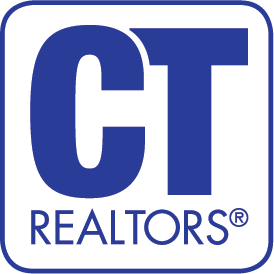Flooding: Not Just a Shoreline Issue
People often associate flooding with properties built on the shoreline. The reality is many properties can suffer from flooding regardless of their proximity to the ocean and due to a variety of causes. CTR has compiled this resource section to help you navigate the often confusing and ever changing Flood insurance/mitigation landscape. Here you will find links to information and tools offered by various federal and state agencies and programs. You will also find some basic retrofitting tips that may help to reduce premium costs with some policies; along with tips on how to try to prevent flood damage.
Be Prepared for the Storm
|
Flood Insurance OptionsFlood insurance is a requirement for many types of mortgages. Federally funded flood insurance is available in cities that participate in the National Flood Insurance Program (NFIP). Connecticut’s Department of Energy & Environmental Protection (DEEP) reports that “currently, all Connecticut municipalities participate in the NFIP.” Many areas of Connecticut are located within a flood zone - whether low, moderate, or high risk depending on the area. Use FEMA’s Flood Map Service Center to determine if your property is presently designated in a flood zone. Excess coverage and alternative policy options may be available. There are limitations on coverage available through NFIP so you may wish to consider excess coverage policies. In addition, the CT Department of Insurance may have approved insurance policy options; but please be mindful that leaving NFIP may impact any grandfathering provision and other aspects of NFIP should you later decide you want to return to that policy. Check your homeowner’s insurance policy to see what, if anything, is covered if damage is directly or indirectly related to a flood. Personal property damage and water-related damage, including floods, may be exclusions or limitations in your homeowner’s policy. Check with your insurance agent to determine what your homeowner’s policy will or will not cover. Flood insurance rates are always subject to change. Like any insurance policy, flood insurance rates and coverage are always subject to change. When Congress passed the Homeowner Flood Insurance Affordability Act in 2014, there were automatic rate increases built into existing NFIP policies. Be sure to review the provisions in the Act to see how those may affect your policy into the future. Lower premium rates can be made possible by retrofitting the property. Retrofitting the property can potentially mitigate flood damage to the property, and therefore may lower premium rates. FEMA provides 6 different methods to retrofitting a home: elevation, wet floodproofing, dry floodproofing, relocation, building levees and floodwalls, and demolition. Researching the method best fit for your property is important because certain retrofits can be expensive and require maintenance. Check with your insurance provider to determine what steps, if any, may lower your premiums. Check out the NFIP's website: floodsmart.gov National Flood Insurance Program Help Center
|
Federal Flood ResourcesFloods are the most common natural disaster in the United States, causing billions of dollars of damage annually, and may lead to deaths. Flood Smart, the official site of the NFIP, reports that “from 2008 to 2012 the average flood claim amounted to nearly $42,000.” For Connecticut in 2012, 5,411 claims were reported. HUD Resources: HUD's Office of Policy Development and Research (PD&R) offers Disaster Response Toolkit (guidance on how to rehabilitate flooded homes, design & construction practices that promote moisture resistance & durability, preparedness for future disasters, and other relevant content) to aid in the recovery process. The reports in this Kit are available in print by calling the HUD USER Clearinghouse at (800) 245-2691, option 1 or can be downloaded for free from the Disaster Response Toolkit page. FEMA: FEMA provides Individual Assistance which “is financial or direct assistance to individuals and families whose property has been damaged or destroyed as a result of a federally-declared disaster, and whose losses are not covered by insurance.” Individual assistance is restricted to federally-declared disasters and can be a lengthy process. Relief funds may be easier to obtain from funds that arise from individual storms. For more info go to disasterassistance.gov or call 1-800-621-3362. FEMA Map Service Center: https://msc.fema.gov/portal Additional Resources:
More information, provided by: National Association of REALTORS Flood Insurance Toolkit These resources are available for homeowners facing steep flood insurance rate increases. The links include information about the legislation, what homeowners can do to appeal new flood maps, and guidance from FEMA about grants and other mitigation programs available. FEMA’S Rate Relief Programs In anticipation of increasing flood insurance rates, FEMA identifies several options that may directly or indirectly result in flood insurance discounts to policyholders.
Statistics Additional Information & Research |
Connecticut Flood Resources
|
